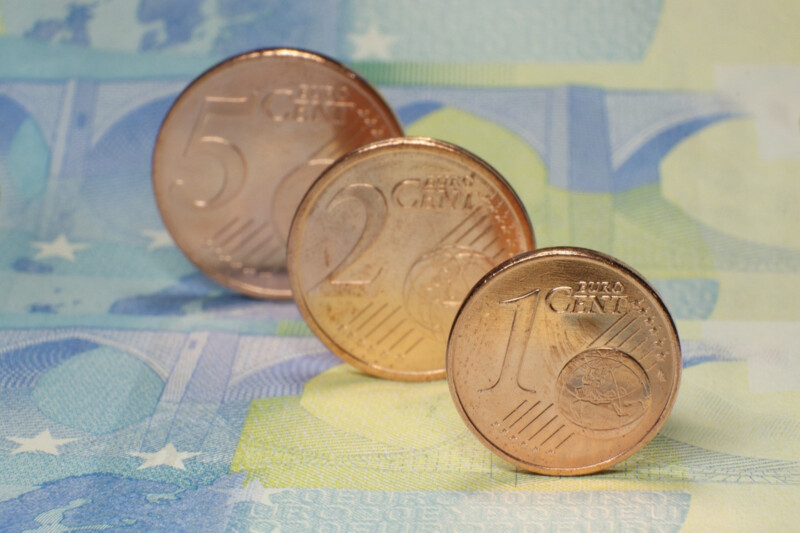La Commission européenne devrait se prononcer au mois de décembre sur l’éventuelle suppression des pièces d’1 et 2 centimes d’euros. La CGT des Monnaies et Médailles craint que la disparition de ces pièces incite les commerçants à arrondir leurs prix à la hausse.
Un coup de production trop élevé
Depuis plusieurs années déjà, la Commission européenne évoque l’éventuel retrait des pièces d’1 et 2 centimes d’euros. Plus récemment, elle a de nouveau remis le sujet sur la table, s’appuyant pour cela sur une consultation menée entre 2020 et 2021 auprès de citoyens européens : 72 % des 17 000 votants ne trouvaient pas ces pièces utiles.
Selon l’institution, ces pièces ont un coût de production plus élevé que leur valeur faciale. Entre 2002, année de leur mise en circulation, et 2013, le coût de leur frappe s’élevait d’après les estimations de la Commission à 1,4 milliard d'euros.
Par ailleurs, ces pièces restent souvent inutilisées et ne sont guère appréciées par les commerçants, qui sont toutefois tenus de les accepter. Certains pays européens ont déjà franchi le pas, en arrondissant les prix aux 5 centimes les plus proches : c’est le cas de l’Italie, de l’Irlande, de la Belgique, des Pays-Bas, de la Finlande et, plus récemment, de la Slovaquie.
En France, 13 milliards de pièces d’1 et 2 centimes ont été mises en circulation depuis 2002, et 300 millions d’unités supplémentaires ont été fabriquées par la Monnaie de Paris en 2022.
Le retrait de ces pièces pourrait entraîner une hausse des prix
Une décision de la Commission européenne était attendue au 2ème trimestre 2022, mais l’institution est finalement restée silencieuse à ce sujet. Cependant, selon les informations du média MoneyVox, la Commission devrait émettre des propositions au mois de décembre.
« Il s'agirait de mettre en place des règles d'arrondis communes à l'ensemble de la zone euro », a déclaré la Monnaie de Paris à MoneyVox.
De leur côté, les syndicats n’approuvent pas la suppression de ces pièces rouges. La CGT des Monnaies et Médailles y est fermement opposée, et balaye dans un récent communiqué l’argument du coût de production avancé par la Commission européenne.
Selon la CGT, cet argument n’est pas recevable car « il fait abstraction du fait qu’une pièce de monnaie a vocation à passer de main en main et donc à être utilisée des centaines voire des milliers de fois. Il n’est donc pas pertinent de souligner abondamment, comme le fait la Commission, qu’une pièce de 1 centime a un coût de fabrication de 1,2 centime qui est supérieur à sa valeur faciale ».
De plus, le syndicat affirme que les pièces d’1 et 2 centimes permettent « d’avoir un prix au plus près de la valeur réelle du bien majorée de la marge du commerçant ». Leur suppression risquerait d’inciter les commerçants à « arrondir les prix à leur avantage exclusif ».
D’après la CGT, même si la Commission européenne fixait des règles strictes relatives aux arrondis, leur mise en application serait impossible à vérifier dans chaque commerce de la zone euro.
Le syndicat insiste sur le fait que l’inflation risque d’être aggravée par la suppression de ces pièces, et qu’une telle décision ne serait pas comprise, dans ce contexte, par les consommateurs européens. En 2018, l’association de consommateurs UFC-Que Choisir s’inquiétait déjà d’une possible hausse des prix en cas de suppression des pièces d’1 et 2 centimes.
